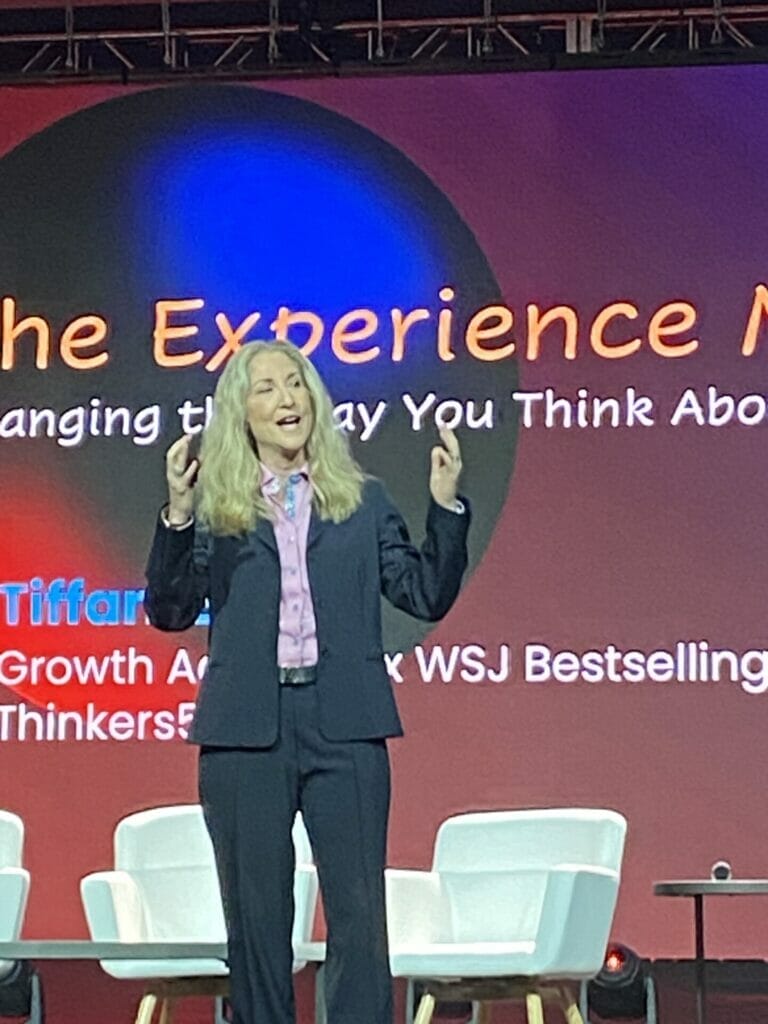MSPs that balance employee experience with customer experience will win out over competitors.
Tiffani Bova is the global growth and innovation evangelist at Salesforce and best-selling author of Growth IQ. In her latest book, The Experience Mindset, Bova set out to prove that focusing solely on customer experience (CX) is not enough to win the customer acquisition battle. Today, companies need to improve the employee experience (EX) as well, because businesses with happy and engaged employees innovate and grow faster than the competition. Improving EX, like CX, involves addressing people, process, technology and culture, she maintains. Based on research studies and conversations with hundreds of executives, Bova explains how to adopt an “experience mindset.”
MSP Success had a chance to sit down with Bova at the recent Ingram Micro ONE 2023 partner conference, where she delivered the keynote. This is an edited version of that conversation.
MSP Success: The business world has been talking about customer experience (CX) for a while now. What got you interested in employee experience (EX)?
Tiffani Bova: I would say specifically in the channel, I was probably guilty of bringing the (CX) topic to the forefront when I was a research fellow at Gartner. I was part of the team in 2008 that made the prediction that the chief marketing officer would spend more on technology than the chief information officer.
We believed that the CMO was going to own and have more control over the stack. They were hiring UI designers and reference architects and data scientists specifically to focus on customer experience, because we and they believed it was going to be where brands were going to compete. It couldn’t be this race to zero on price – they had to find a way to improve the value, especially in B2B. Customer experience has been a common thread in B2C for a very long time, but it really started to make its move to B2B around that time.

In my first book, Growth IQ, it was a total miss on my part in terms of understanding who the keepers are of a company’s customer experience promise – our employees. If employee satisfaction and engagement aren’t thought of in the same breath as customer experience, it will never get as much momentum as companies want.
Especially in the channel with a two-tier or even three-tier distribution model, it’s important to ask: Who owns that end-user customer experience? Is it the partner? Is it distribution? Is it the vendor? How do you connect those things? It’s the employees.
MSP Success: A lot of channel companies, particularly smaller MSPs, are still catching up with CX. What’s the business case for them now turning their attention to EX?
Bova: Finding talent that already has certifications or capabilities isn’t always easy. So, if you hire somebody and then you make investments in them, that’s part of the employee experience, right? You want to give them career development. You want to give them a reason to stay. You want to give them the opportunity for greater responsibility or even the ability to earn more money. That skill development is part of that employee experience.
The average MSP is probably a million, a million and a half, so it gets challenging for them to make these kinds of investments. They hear what I’m saying, and they go, “Oh, that’s for the medium or large organizations, not for me.” But if you don’t have happy employees, how do you ever imagine you’d have happy customers? And if you don’t have happy customers, you don’t have a business. They are inextricably connected, and it becomes a virtuous cycle of momentum. In multiple research studies, we thought you could start with customer and it would lift employee experience, and it did a little, but then it capped out.
The only way to get that momentum in a virtuous cycle is to start with employees. If they’re disengaged or dissatisfied, they’re not going to go the extra mile for the customer. They’re not going to collaborate with colleagues and co-workers. They’re not going to invest in their own learnings. And then you have a suboptimal customer experience. Especially in the channel, it’s important that you look at it with the lens of both.
MSP Success: There have been a lot of high-profile employee strikes and employees “quiet quitting” in the last few years. Is this a manifestation of poor EX?
Bova: Yes, yes, yes. The pandemic shined a light on the lack of investments we’ve made in employees for decades. (Starting with the Industrial Revolution,) we were automating and it was all about productivity. Then, all of a sudden, the separation of how much humans were producing and how much they were getting paid and how much businesses were earning started to get out of whack. Now, 60 years later, here we are.
Here’s an example: Your customers are super happy and the company is absolutely obsessed with customer experience, but their employees are trying to unionize, so it means they’ve overpivoted to the customer and left the employee behind. They nailed the customer experience promise but added effort for the employees and decreased their experience. I don’t ever believe it will be even, but I ask leaders, every time you make a decision for a customer, just take a beat and understand the implications for your employees.
MSP Success: What are some steps MSP business owners can take in 2024 to increase their experience mindset?
Bova: Survey your customers and ask them five questions before the end of the year. For instance, “How hard is it for you to do business with us?” Then ask your employees similar pulse questions: “How hard is it for you to do your job every day?”
If customers are giving you fours and fives on a scale of one to five, and your employees are giving you twos and threes, focus on employees for now. If it’s the reverse, that’s almost a better situation to be in because now you can say, “OK, the employees are satisfied, they’re engaged, they’re committed, they’re collaborating, they’re doing all the things I need them to.” Then you can create working teams within your employee base to address customer experience.
People might say, “Oh this is a lot of work. We don’t have a lot of money. I’m trying to keep the business afloat.” There’s a litany of things that leaders are struggling with. There’s an example in my book of a leader who created an e-mail box called “stupid shit we do at our company” and asked employees to tell her one thing that wastes their time or is a broken process. Everybody responded. She had her leadership team create buckets around the top three things people said regarding technology, processes, systems, tools and training. Then they communicated back to the employees: “Here’s what we heard, here’s everything we’re doing, and here are the things we’re not going to do and why.” They didn’t have a morale problem, but it created greater trust. Now the employees felt safe giving feedback that things weren’t working.
I give that example because I think people feel like (addressing EX) is some big, expensive, long project.
MSP Success: How do you measure EX success?
Bova: I have an entire chapter on the top metrics in customer experience and employee experience, but what I would say is, if you have a metric for your customer, have an equal metric for your employee. So, if you’re tracking net promoter score or customer satisfaction, you should track employee satisfaction or employee net promoter score. You will start to see the connection between them. When one drops or one rises, that’s where you focus the dials.












